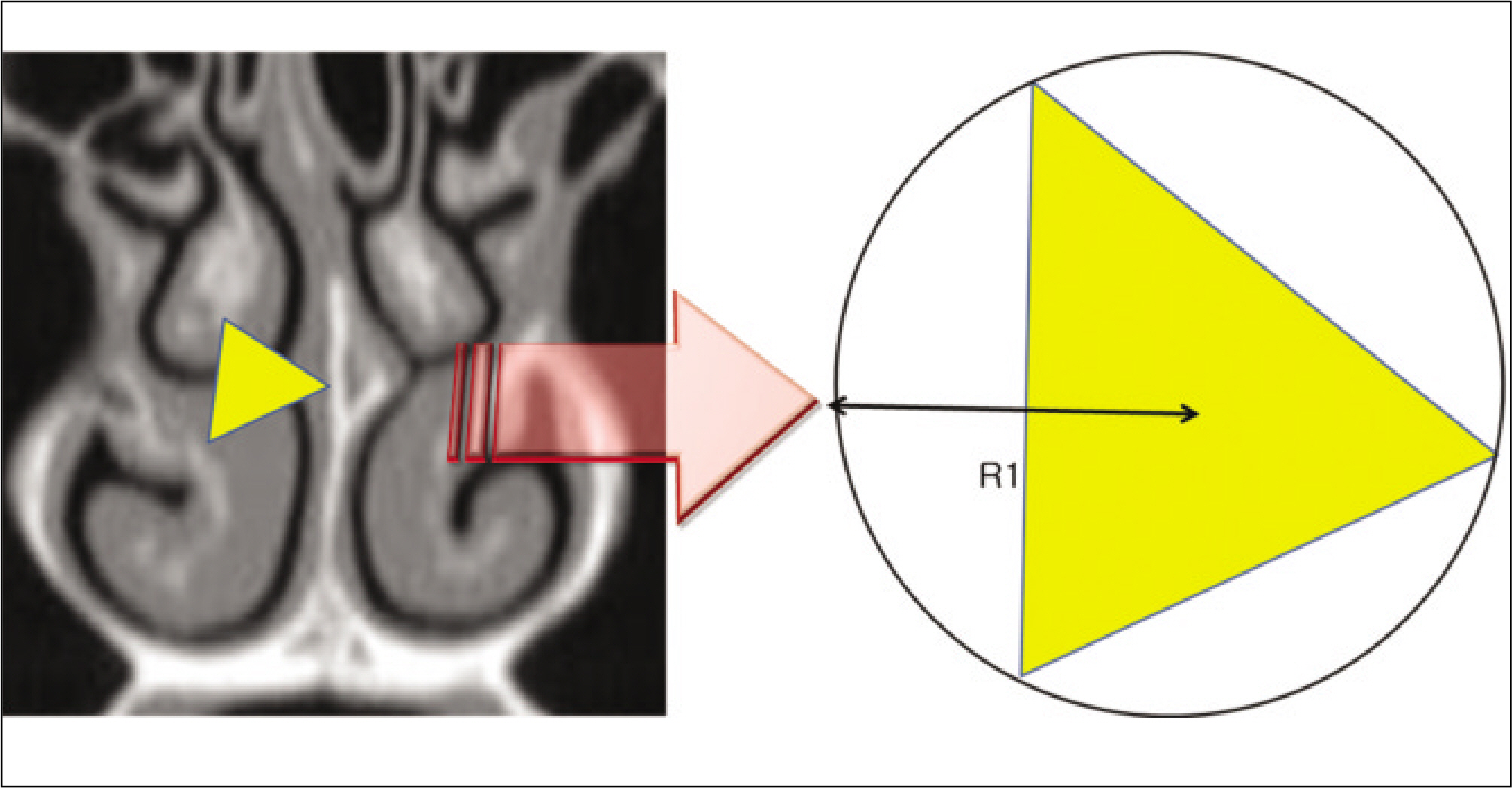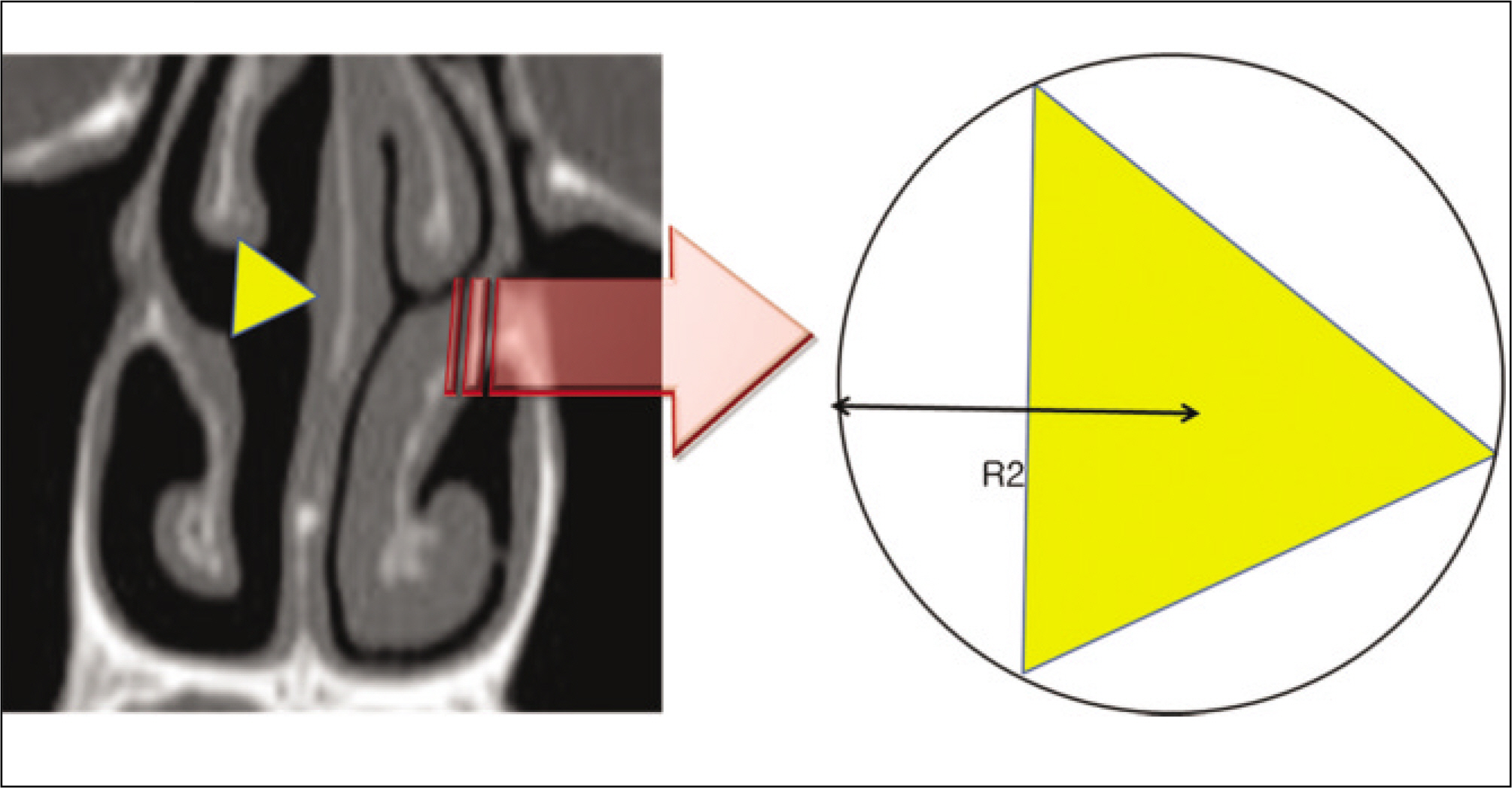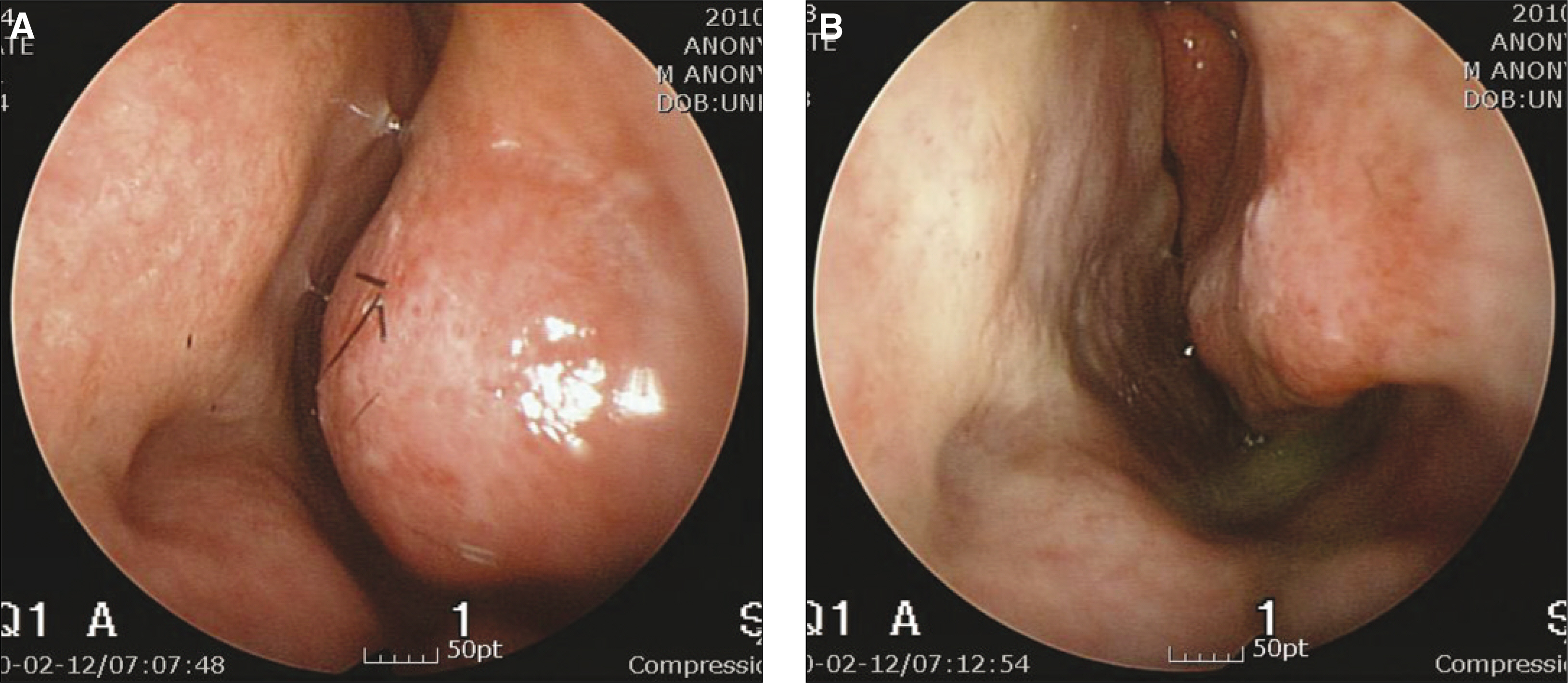J Korean Assoc Oral Maxillofac Surg.
2010 Jun;36(3):197-201. 10.5125/jkaoms.2010.36.3.197.
Computed tomography evaluation and pretreatment for a safe nasotracheal intubation, avoiding nasal cavity injuries
- Affiliations
-
- 1Department of Oral and Maxillofacial Surgery, College of Medicine, Chung-Ang University, Seoul, Korea. oms@hanmail.net
- 2Department of Otolarygology, Head and Neck Surgery, College of Medicine, Chung-Ang University, Seoul, Korea.
- 3Department of Anesthesiology, College of Medicine, Chung-Ang University, Seoul, Korea.
- KMID: 2189947
- DOI: http://doi.org/10.5125/jkaoms.2010.36.3.197
Abstract
- INTRODUCTION
In a surgery of the oral cavity, nasotracheal intubation is often carried out to secure the surgical field. By passing a tracheal tube through the nasal cavity to the pharynx, the nasotracheal intubation can lead to complications that do not occur with oral intubation, such as nasal bleeding and submucosal aberration etc. The purpose of this study is to examine the method of CT evaluation and pretreatment for a safe nasotracheal intubation.
MATERIALS AND METHODS
Among 30 patients who orthognathic surgery was performed at Chung-Ang University Hospital during the period August 2009 to October 2009, 30 patients were included.
RESULTS
CT evaluation with pretreatment group had a significantly lower incidence of nasal bleeding than the group with no pretreatment.
CONCLUSION
CT evaluation with pretreatment helps to minimize nasal bleeding during nasotracheal intubation.
Keyword
MeSH Terms
Figure
Reference
-
References
1. Rogers MC, Tinker JH, Covino BG, Longnecker DE. Principles and practice of anesthesiology. 1st ed.St. Louis: Mosby-Year Book Inc;1993.2. Collins VJ. Principle of anesthesiology. 3rd ed.Philadelphia: Lea and Febiger;1993.3. Choi YK, Kim JC, Kim KS, Kang WJ, Kim DS, Shin KI. Effects of balloon on the development of epistaxis and impingement during nasotracheal intubation. Korean J Anesthesiol. 1996; 30:276–81.
Article4. Stoelting RK, Miller RD. Basics of anesthesia. 3rd ed.New York: Churchill Livingstone;1994.5. Gravenstein N, Kirby RP. Complications in anesthesiology. 2nd ed.Philadelphia: Linppincott-Raven;1996.6. Hwang SO, Kang BJ, Kim SK. Does the esophageal stethoscope inserted into the reinforced endotracheal tube decrease the incidence of nasal bleeding following nasotracheal intubation? Korean J Anesthesiol. 1996; 30:271–5.7. Long TM. Atraumatic nasopharyngeal intubation for upper airway obstruction. Anaesthesia. 1988; 43:510–1.
Article8. Akog ̆ lu E, Karazincir S, Balci A, Okuyucu S, Sumbas H, Dag ̆ li AS. Evaluation of the turbinate hypertrophy by computed tomography in patients with deviated nasal septum. Otolaryngol Head Neck Surg. 2007; 136:380–4.
Article9. Uzun L, Ugur MB, Savranlar A, Mahmutyazicioglu K, Ozdemir H, Beder LB. Classification of the inferior turbinate bones: a computed tomography study. Eur J Radiol. 2004; 51:241–5.
Article10. Hol MK, Huizing EH. Treatment of inferior turbinate pathology: a review and critical evaluation of the different techniques. Rhinology. 2000; 38:157–66.11. Passa ` li D, Lauriello M, Anselmi M, Bellussi L. Treatment of hypertrophy of the inferior turbinate: longterm results in 382 patients randomly assigned to therapy. Ann Otol Rhinol Laryngol. 1999; 108:569–75.
Article12. Friedman M, Vidyasagar R. Turbinate Hypertrophy. Bailey BJ, Johnson JT, Newlands SD, editors. Head and Neck surgery: Otolaryngology. 4th ed.Philadelphia: Lippincott Williams and Wilkins;2006. p. 328–30.13. O'Hanlon J, Harper KW. Epistaxis and nasotracheal intubation-prevention with vasoconstrictor spray. Ir J Med Sci. 1994; 163:58–60.14. Lee GW, Kim SK, Kim KY. A pulmonary atelectasis due to nasal bleeding after nasotracheal intubation: a case report. Korean J Anesthesiol. 1996; 30:502–5.
Article15. Kameyama K, Watanabe S, Kano T, Kusukawa J. Effects of nasal application of an epinephrine and lidocaine mixture on the hemodynamics and nasal mucosa in oral and maxillofacial surgery. J Oral Maxillofac Surg. 2008; 66:2226–32.
Article16. Kim HJ, Yum KW. A prospective study on complications after nasotracheal intubation in oral and maxillofacial surgery patients. Korean J Anesthesiol. 2000; 39:72–6.
Article
- Full Text Links
- Actions
-
Cited
- CITED
-
- Close
- Share
- Similar articles
-
- Effective removal of epistaxis during nasotracheal intubation utilizing a fiberoptic scope in a difficult airway: A case report
- Nasotracheal intubation for airway management during anesthesia
- Clinical Applications of the Balloon Dilation Technique during the Insertion of the Nasotracheal Tube
- Repeated endotracheal tube cuff tears during nasotracheal intubation due to nasal cavity orthodontic micro-implant - A case report -
- Effects of Balloon Dilation Technique on Incidence of Epistaxis and Ease of Tube Advancement in the Nasal Cavity




